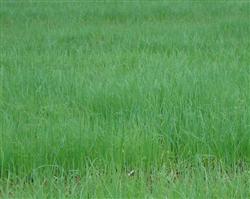Varieties and classification of onions

The main results are as follows: 1 the main types of onions can be classified into ① common onions (Allium epa L.) each plant usually forms only one bulb. Seeds propagate, and a few varieties form aerial bulbs on inflorescences under special conditions. Common onion, generally can be divided into oblate spherical, spherical, oval and spindle-shaped according to the shape of its bulb. It can also be divided into early maturity, middle maturity and late maturity. To the south of the Yangtze River, there are mainly middle and early maturing species. It can also be divided into three types according to different geographical latitudes: "short day" type: suitable for the south of the Yangtze River in China, latitude 32 °~ 35 °north latitude. Most of these varieties are sown in autumn and harvested in spring and summer. "long day" type: suitable for all parts of Northeast China, latitude is in the north of 35 °~ 40 °N, this kind of variety is sown or planted in early spring (with bulblets) and harvested in autumn. Intermediate type: suitable for Yangtze River and Yellow River basins, 32 °~ 40 °north latitude. These varieties are sown in autumn and harvested in late spring and early summer the following year. ② Tillering Onion (A.Cepa var.Agrogatum Don) can tiller and usually does not bear seeds. Bulbs can be formed at the base of each tiller and propagated with tillering bulbs. ③ terminal onion (A.Cepa var.viviparum Merg) bears many aerial bulbs on inflorescence. Aerial bulbs can be used to reproduce without seeds. It is mainly used as pickling. Like tillering onions, terminal onions are rarely cultivated except for special purposes. (2) in each type, the main cultivated varieties can be divided into red skin, yellow skin and white skin according to the skin color of the bulb. ① red onion onion appearance purplish red, fleshy fleshy, oblate or spherical, 8~10cm in diameter. It is resistant to storage and transportation, has a short dormancy period and sprouts early, showing early to middle maturity, and harvested from late May to early June. It is widely cultivated in East China. Representative varieties include Shanghai Hongpi and so on. ② yellow onion onion brass to light yellow, fleshy, yellowish and soft, fine tissue, spicy. Oblate, 6~8cm in diameter. More resistant to storage, transportation, precocious to medium maturity. The yield is lower than that of red bark, but the quality is better, so it can be used for dehydration processing. Round or tall round, suitable for export, representative varieties are Lianyungang 84-1, DK yellow, OP yellow, Dabao, Laixuan 13 and so on. ③ white onion white onion, fleshy scales, white, flat spherical, some are tall round and spindle-shaped, 5~6cm in diameter. Good quality, suitable for dehydration processing of raw materials or canned food ingredients. But the yield is low and the disease resistance is weak. Early autumn sowing in the Yangtze River basin is easy to bolting in advance. The representative varieties are Hami white skin and so on.
- Prev

Topdressing management techniques of onion
1. Selection of superior seeds In production, Ziyu 1, Ziyu 2, Zixing, Shuanghuanghong and other purple skin varieties can be selected. These varieties have the characteristics of spicy flavor, high yield, excellent quality and suitable export. These varieties generally yield about 5000 kg per mu, and the yield per mu of high-yield plots can reach 7500 kg. II.
- Next

The "five hurdles" should be taken to raise onion seedlings in autumn.
Onion has the characteristics of low input, high yield, simple management and high benefit, so it is an ideal vegetable variety for vegetable farmers to commercialize production and increase income. The first ten days of September is the best time for raising onion seedlings. The main points of seedling raising techniques are introduced as follows. Seed selection can choose Ziyu No. 1 and Ziyu in production.
Related
- Where is it suitable to grow horseradish in China? it is expected to see the middle altitude horseradish in Alishan.
- How to prevent tomato virus disease reasonably? (Control methods included)
- Many people like to plant towel gourd on the balcony. What are the main points of this method and management?
- What crops can chili peppers be mixed with?
- Fertilization techniques and matters needing attention in Tomato
- What are the grafting techniques for peach seedlings in spring?
- Harm and control methods of root swelling disease of Chinese cabbage
- What are the pests of sweet potatoes? How to prevent and cure it?
- Symptoms, causes and Control methods of navel Rot in Tomato
- The cause of "Cucumber rotten bibcock" in Farmers' planting Cucumber and its Control Plan

